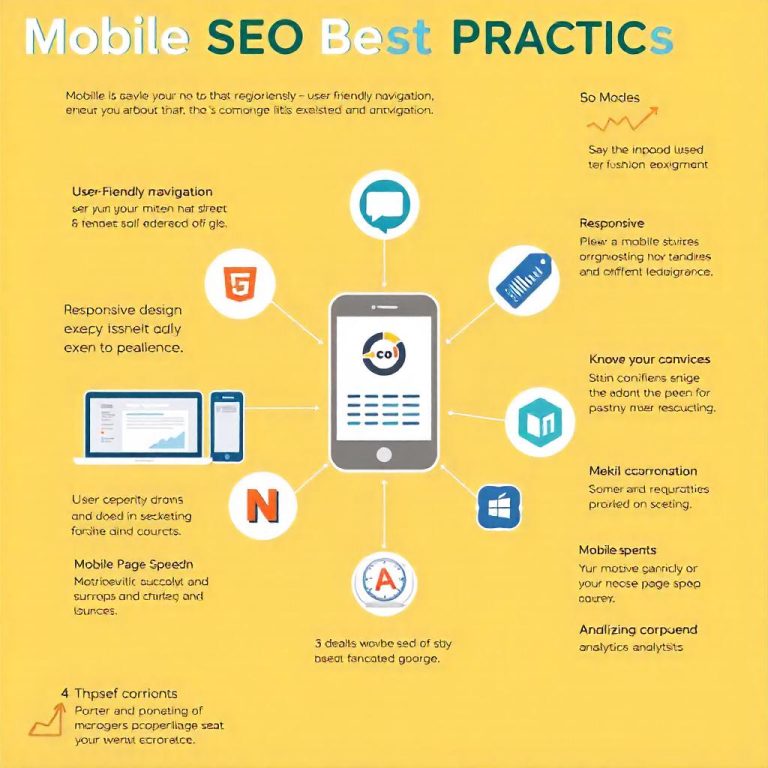How To Measure SEO Success
Measuring the success of your SEO efforts is crucial to understanding how well your website is performing in search engine rankings and whether your strategy is driving meaningful results. By tracking key metrics, you can adjust your approach to improve rankings, traffic, and conversions. Here’s how to effectively measure SEO success.
1. Organic Traffic
Organic traffic refers to visitors who come to your website through search engines like Google, Bing, or Yahoo. This is one of the most fundamental metrics to assess the effectiveness of your SEO efforts.
Top Free Digital Marketing Online Courses to Boost Your Skills (Get List And Websites
- Why it matters: Increased organic traffic is a clear indicator that your SEO strategies are helping your site rank higher on search engine results pages (SERPs).
- How to measure it: Use tools like Google Analytics to track the volume of organic traffic over time. Check the “Acquisition” section to see how much of your traffic is coming from organic search.
- What to look for: Look for consistent growth in organic traffic, particularly after implementing new SEO strategies like content optimization, backlink building, or technical SEO fixes.
2. Keyword Rankings
Tracking your keyword rankings is vital for understanding how well your website is performing in search engines for specific keywords.
- Why it matters: If your target keywords are ranking higher, it means your website is becoming more visible for relevant searches, which can lead to more traffic and conversions.
- How to measure it: Use tools like Google Search Console, Ahrefs, or SEMrush to monitor your keyword positions.
- What to look for: Look for improvements in rankings for both primary and secondary keywords. Pay attention to whether high-priority keywords are climbing up the SERPs.
3. Click-Through Rate (CTR)
CTR refers to the percentage of users who click on your website’s link after seeing it in the search engine results.
- Why it matters: A higher CTR indicates that your meta descriptions, titles, and URLs are compelling and aligned with user intent. It’s a good sign that users find your listing attractive in the search results.
- How to measure it: You can track CTR in Google Search Console by looking at the “Performance” report, which shows impressions, clicks, and average CTR for each page.
- What to look for: A higher CTR means your title tags and meta descriptions are optimized. You should aim for a CTR above 2-3%, though this can vary by industry and keyword difficulty.
4. Bounce Rate
Bounce rate measures the percentage of visitors who land on a page and leave without interacting with any other content on the site.
- Why it matters: A high bounce rate may indicate that visitors are not finding the content relevant to their search query, or the user experience is poor.
- How to measure it: Bounce rate can be tracked via Google Analytics under the “Behavior” section.
- What to look for: A lower bounce rate generally means users find your content engaging and are exploring multiple pages on your website. Aim for a bounce rate below 50%, though this varies by website type.
5. Conversion Rate
The conversion rate measures how many of your visitors take a desired action, such as making a purchase, filling out a form, or subscribing to a newsletter.
- Why it matters: SEO isn’t just about driving traffic—it’s also about driving valuable actions that contribute to your business goals.
- How to measure it: Track conversions in Google Analytics by setting up conversion goals or using e-commerce tracking if applicable.
- What to look for: A higher conversion rate indicates that visitors are finding your content useful and are compelled to take action. Optimizing landing pages and content around user intent can improve conversion rates.
6. Backlinks
Backlinks (links from other websites to yours) are a critical factor in SEO because they signal to search engines that your website is trustworthy and authoritative.
- Why it matters: A strong backlink profile can help increase your website’s authority, leading to higher rankings and better organic traffic.
- How to measure it: Use tools like Ahrefs, Moz, or SEMrush to track the number and quality of backlinks pointing to your site.
- What to look for: Focus on acquiring high-quality backlinks from reputable sources in your industry. The more authoritative the linking domain, the greater the benefit to your SEO.
7. Page Load Speed
Page load speed is the time it takes for a page to fully load in a user’s browser.
Start Your Digital Business Today for Just 20 USD
- Why it matters: Search engines like Google use page speed as a ranking factor. Slow pages not only hurt rankings but also impact the user experience, increasing the likelihood of visitors abandoning the page.
- How to measure it: Use tools like Google PageSpeed Insights, GTmetrix, or Pingdom to analyze your page load speed.
- What to look for: Aim for a load time of under 3 seconds. If your pages take longer to load, consider optimizing images, reducing unnecessary scripts, and leveraging browser caching to speed up your site.
8. Mobile Usability
With more users accessing websites via mobile devices, ensuring that your website is mobile-friendly is crucial for SEO success.
- Why it matters: Google uses mobile-first indexing, meaning it prioritizes the mobile version of your site when determining rankings. A poor mobile experience can negatively affect your search rankings and traffic.
- How to measure it: Use Google’s Mobile-Friendly Test tool to evaluate the usability of your site on mobile devices.
- What to look for: Your website should have a responsive design, meaning it should adapt seamlessly to any screen size. A good mobile usability score can help improve rankings and enhance the user experience.
9. User Engagement Metrics
Engagement metrics like average session duration, pages per session, and interactions can give you an idea of how engaging your content is.
- Why it matters: High engagement indicates that users are finding your website valuable and are more likely to convert.
- How to measure it: Track engagement metrics in Google Analytics under the “Audience” section.
- What to look for: A higher average session duration and more pages per session can indicate that users are spending more time exploring your content, which can improve your SEO rankings.
10. Core Web Vitals
Core Web Vitals are a set of metrics introduced by Google to measure user experience on websites, focusing on factors like page load performance, interactivity, and visual stability.
Digital Marketing for Beginners: Learn Affiliate Marketing and Facebook Ads
- Why it matters: Google has made Core Web Vitals an official ranking factor, so improving these metrics can directly impact your search rankings.
- How to measure it: Use Google Search Console’s Core Web Vitals report or tools like Lighthouse or Web Vitals Extension to monitor these metrics.
- What to look for: Pay attention to metrics like Largest Contentful Paint (LCP), First Input Delay (FID), and Cumulative Layout Shift (CLS), aiming for scores that indicate good user experience.
11. Local SEO Performance (if applicable)
For businesses targeting local customers, local SEO performance is an important metric to track.
- Why it matters: Local SEO helps your business appear in local search results, driving traffic from users in your geographical area.
- How to measure it: Use Google My Business insights and track local search rankings using tools like Moz or BrightLocal.
- What to look for: Monitor local rankings, local traffic, and how well your business appears in local search results and Google Maps.
12. Competitor Analysis
Finally, comparing your SEO performance with that of your competitors can give you valuable insights into areas for improvement.
- Why it matters: Understanding how your competitors are ranking for the same keywords and topics helps identify opportunities and gaps in your strategy.
- How to measure it: Use tools like SEMrush, Ahrefs, or SpyFu to analyze competitor keywords, backlinks, and overall SEO performance.
- What to look for: Monitor how your rankings and traffic compare to competitors, and look for keywords or content that you can target more effectively.







